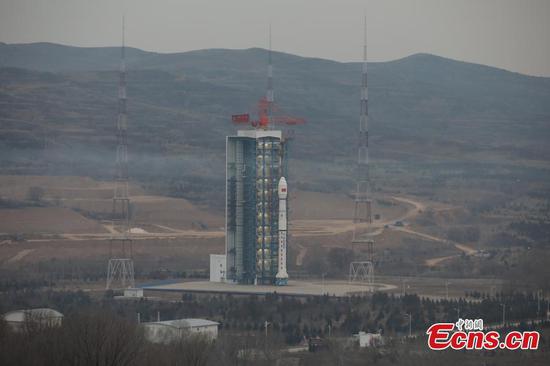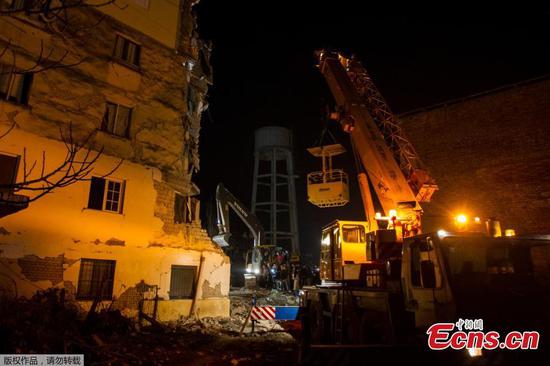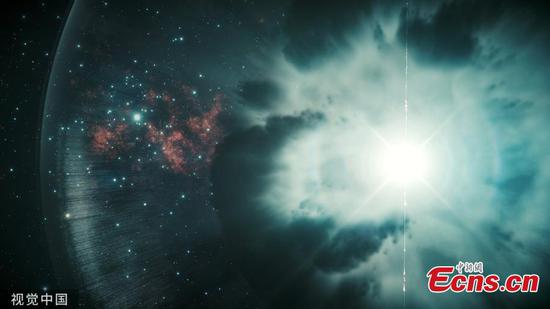
A rendering picture of the huge stellar black hole LB-1. (Photo provided to China News Service)
(ECNS) - Researchers from National Astronomical Observatories at the Chinese Academy of Sciences have discovered a stellar black hole with a mass 70 times greater than the sun, forcing scientists to re-examine their formation.
All stellar-mass black holes have hitherto been identified by X-rays emitted from gas accreting companion stars [sound better - not sure if it makes more sense..].
Theory predicts, however, that X-ray-emitting systems form a minority of the total population of stellar black-hole binaries. When the black hole is not accreting gas, it can be found through radial-velocity measurements of companion star motion.
Research led by Liu Jifeng and Zhang Haotong revealed radial-velocity measurements taken over two years of the Galactic B-type star, LB-1.
The team said the B star had the presence of a dark companion equivalent to 68 solar masses, which can only be a black hole. The long orbital period of 78.9 days shows that this is a wide binary system.
Gravitational-wave experiments have detected black holes of similar mass, but their formation in a high-metallicity environment would be extremely challenging within current stellar evolution theories. As a result, this finding is of great importance, according to researchers.
The work was only made possible with LAMOST (Large Sky Area Multi-Object Fiber Spectroscopic Telescope), a National Major Scientific Project built by the Chinese Academy of Sciences, it was noted.
This work is partly based on observations made with tGran Telescopio Canarias (GTC), installed in Spain. Part of the data was obtained at the W.M. Keck Observatory, which is operated as a scientific partnership among the California Institute of Technology, University of California and National Aeronautics and Space Administration.
The finding was published in the academic journal Nature.


















































